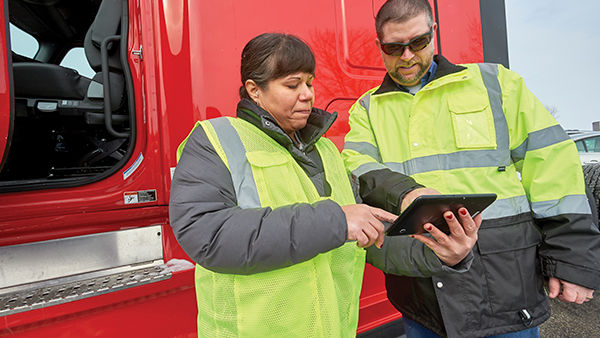Corrective Action Training Plays a Key Role in MVR Monitoring
Jill Schultz, Sr. Editor - Transportation Safety
December 4, 2023

Every year, as one of several year-end tasks, Michael pulls and reviews each driver’s motor vehicle record (MVR). Typically, a relatively easy process – send requests to the state driver licensing agencies, review the MVRs returned, document that each MVR has been reviewed, and then place the MVR and review documentation in each driver’s qualification file (DQ file).
This year, there is a something different that Michael didn’t expect. Michael found traffic violations on the MVRs of three drivers. Now what?
Michael could consider this a rare occurrence, place the paperwork in the DQ files, and ignore the issue. Or Michael could take action to address these violations with the drivers in an effort to prevent further offenses or issues.
How Michael addresses this issue could be the difference when it comes to preventing future violations, incidents, and accidents. And in turn, prevent increases in insurance premiums and potential litigation.
More frequent monitoring and addressing the issue is necessary
First, to avoid surprises, Michael should be monitoring driver records on a more frequent basis and have a policy that requires drivers to report driving violations when they occur. Then, when violations happen or are discovered, Michael should provide corrective action training (CAT).
CAT, sometimes referred to as remedial training, is a brief, targeted training session focused on an individual driver in response to an accident, violation, or complaint.
The goal of CAT is to address and correct a minor issue, problem, or bad habit when it first occurs – before it escalates into something major that could lead to a serious accident and/or violation.
The instruction should be relatively brief (no more that 5 to 10 minutes in duration) and focused on the specific problem area. Instruction should occur as soon as possible following the incident that triggered the need for training.
The goal is to send a message to drivers that the company is serious about safety and compliance and that correction is necessary.
Once training is completed, the driver should continue to be monitored to verify that CAT is working. This lets the driver know the company is serious and provides proof that there is a change in behavior. This could prove vital if the driver is involved in a related accident or incident later on.
J. J. Keller's MVR Monitoring Service helps spot risky drivers quickly with year-round visibility into your employees' driving records.